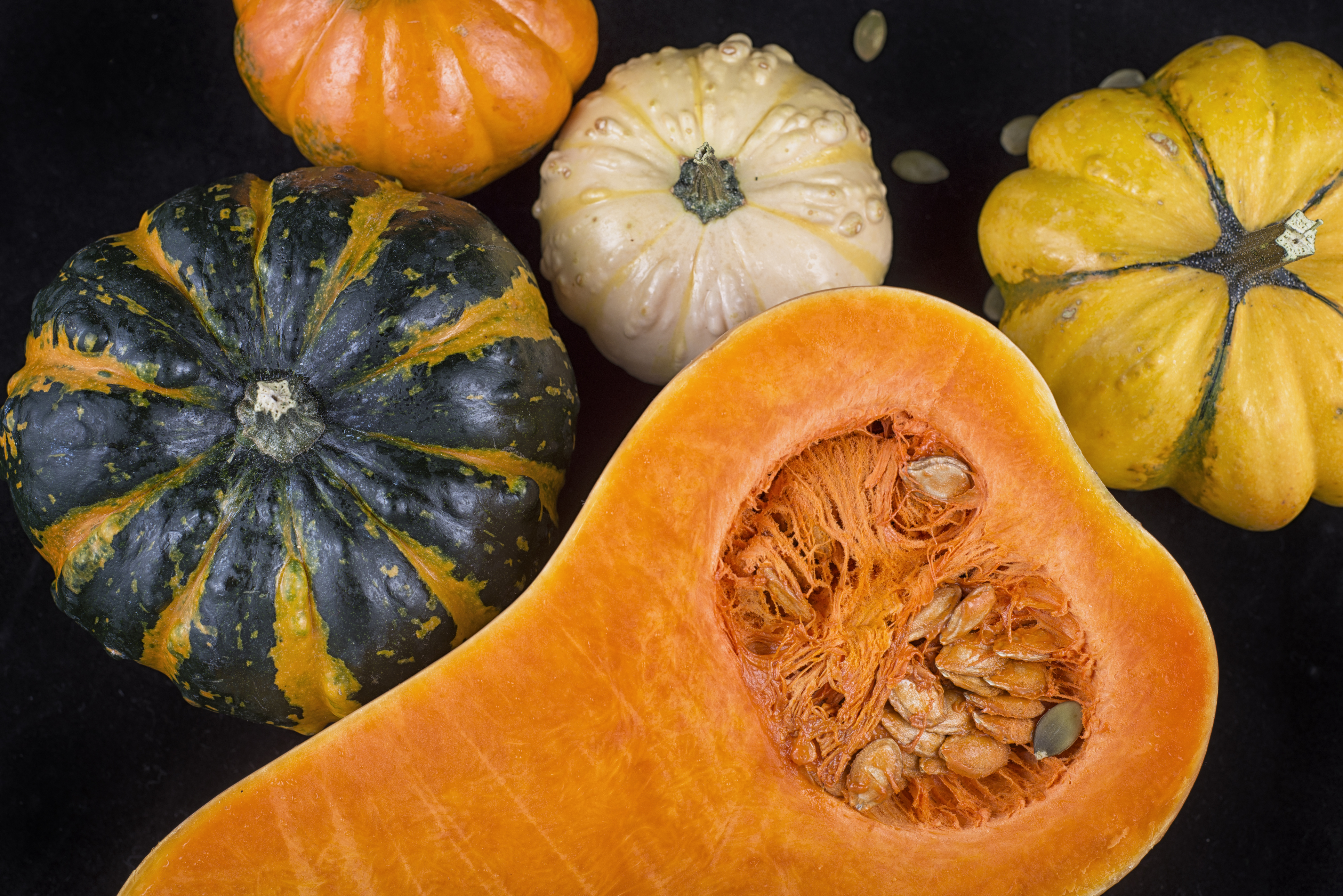From acorn to butternut to pumpkin to spaghetti, there are a rainbow of winter squashes. Learn to use up every delicious bite with our guide.
Optimal Storage
- Store unwrapped in a cool, dark, dry, well-ventilated place (they keep best at around 13°C).
- Life may be somewhat shorter if stored on the counter at room temperature.
Freezing
- Cook until soft, remove rind, and mash. Allow to cool, then place in an airtight container and freeze.

Root to Fruit
- The skins of most winter squash, including butternut and acorn squash, are edible when cooked.
- The seeds of winter squash are also edible and can be toasted just as you would pumpkin seeds.
- The skins can be used as an edible container for other dishes—fill with desired filling, then bake and serve.
- Make squash “chips” in the oven. Slice very thin using a mandoline or peeler, toss with olive oil and salt, and bake at 400ºF/200ºC until the chips are curling but not browned, 20 to 35 minutes. Cool for 10 minutes—they will crisp the way cookies do after coming out of oven.
Revival
- Small dents and bruises, such as from where the squash has been resting, are purely cosmetic. Cut out any bad spots when preparing the squash.

